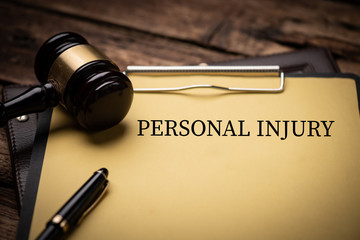Clean surfaces reveal more than shine. They uncover care, detail, and the invisible discipline behind every rinse. Windsor Power Wash method has become the quiet revolution in the art of surface renewal. It’s not just about pressure—it’s about precision, timing, and understanding the delicate balance between power and preservation.

In the modern world, cleanliness has transformed into a symbol of pride and progress. Surfaces exposed to the elements endure more than dust; they collect time itself. The Windsor Power Wash approach treats every layer of grime as a story waiting to be rewritten. Through controlled streams of water and refined techniques, it restores what nature and neglect have hidden.
Unlike traditional cleaning, this method relies on the mastery of balance. Too much pressure can harm, too little can fail to clean. The secret lies in modulation, adjusting power to the sensitivity of the surface. This fine-tuned process protects materials while revealing their original beauty.
The innovation behind power washing has grown quietly yet significantly. Technology has introduced nozzles that adapt in real-time, sensing resistance and modifying water flow. This ensures consistency, even across uneven surfaces. The Windsor Power Wash method embraces these advancements while maintaining the human touch that technology alone cannot replicate.
Every building tells a story through its walls and walkways. Over time, these surfaces collect residues that dull their essence. Power washing acts as both an eraser and an artist’s brush, removing imperfections while enhancing details. It turns ordinary exteriors into reflections of care and craftsmanship.
What makes this approach exceptional is its respect for surface diversity. Wood, stone, glass, and metal each respond differently to pressure and moisture. The Windsor Power Wash technique considers this, creating a personalized rhythm for each texture. It’s cleaning that listens before it acts.
Eco-conscious innovation defines the new generation of power washing. The use of biodegradable solutions ensures safety for both the surface and the environment. Water is carefully regulated to reduce waste without compromising results. This thoughtful method proves that sustainability and cleanliness can flow in the same direction.
Maintenance teams now view power washing not as a seasonal necessity but as a preventive ritual. Dirt buildup accelerates decay, and regular washing extends surface life. The Windsor method introduces a philosophy of continuous care rather than reactive cleanup. It’s the difference between maintaining and merely repairing.
Power washing has also entered the realm of artistry. Modern operators see beyond grime—they see texture, reflection, and transformation. The process becomes a performance where every stream of water follows purpose. Watching a dull, weathered surface come alive again feels almost cinematic.
For communities, clean spaces shape perception. Buildings that gleam with renewed clarity foster pride and confidence. The Windsor Power Wash approach doesn’t just serve owners; it uplifts entire neighborhoods. When the environment reflects order and care, people feel inspired to preserve it.
Precision technology has made this craft even more remarkable. Smart sensors, temperature control systems, and water filtration units have elevated standards. Each element contributes to a more refined and consistent result. The Windsor method integrates these tools seamlessly, blending tradition with innovation.
There’s also a psychological side to this practice. Clean surroundings reduce stress and enhance mood. The human brain reacts positively to order and brightness. The power wash effect extends beyond visuals—it transforms energy. What was once dull becomes a source of renewed motivation.
Industrial zones, too, have benefited from this evolution. Heavy machinery, concrete floors, and metal exteriors once thought resistant to cleaning now regain life. Controlled water pressure removes grease and residue without corrosion. The Windsor Power Wash principle applies the same respect for material integrity in every environment.
Even residential properties find transformation through this process. Driveways, fences, patios, and roofs regain their original hues. The careful calibration ensures that delicate paints or finishes remain untouched. This level of customization sets it apart from generic cleaning techniques.
Temperature plays an understated yet vital role in power washing. Warm water loosens deep-seated grime while cooler streams handle sensitive materials. The Windsor Power Wash framework uses this science of temperature to maximize efficiency. It’s cleaning rooted in knowledge, not mere force.
Sound management has also become part of its evolution. Modern machines operate with reduced noise, blending power with discretion. This innovation respects both the user and the surroundings. Cleanliness, after all, should not come at the cost of tranquility.
The relationship between water pressure and surface density requires expertise. A trained operator recognizes subtle signs—a change in tone, vibration, or resistance. These signals guide adjustments in real-time, preventing damage. The Windsor Power Wash philosophy emphasizes observation as much as execution.
Over time, new attachments and accessories have expanded possibilities. Rotating brushes, adjustable spray heads, and foam applicators enhance versatility. Each addition refines the craft, offering greater control and precision. The result is a holistic system where every detail serves a purpose.
Power washing also carries environmental responsibility beyond its tools. Runoff management ensures that contaminants are not reintroduced into natural systems. Collection trays and filtration processes capture residue before disposal. The Windsor method sees cleanliness as an ecosystem, not an isolated act.
The beauty of this approach lies in its simplicity wrapped in science. At its core, it’s water under pressure. Yet within that simplicity exists a world of physics, chemistry, and craftsmanship. Each spray embodies calculation, awareness, and purpose.
Professionals who master this art describe it as both mechanical and meditative. The rhythm of motion and the sound of water create a form of flow state. Precision becomes instinct, and the result is deeply satisfying. The Windsor Power Wash technique turns labor into artistry.
From industrial complexes to quiet residential corners, the impact remains universal. Surfaces breathe again, colors emerge, and textures regain depth. The transformation feels both immediate and enduring. It’s the kind of renewal that doesn’t just clean but restores pride.
The evolution of this practice also hints at the future of maintenance. Automation and AI-driven systems will soon optimize pressure and angle with mathematical precision. Yet the guiding principles of care and respect will remain unchanged. The Windsor Power Wash philosophy bridges the gap between tradition and technology.
Water conservation remains a defining challenge. Innovative recycling systems now collect and reuse water multiple times during a session. Sensors monitor flow rates to maintain balance. Efficiency becomes not just a goal but a responsibility.
In commercial settings, the benefits extend beyond aesthetics. Clean exteriors attract customers and build trust. They communicate professionalism and attention to detail. The Windsor Power Wash process thus becomes a silent ambassador for brand reputation.
One overlooked advantage lies in structural protection. Layers of grime trap moisture, leading to slow deterioration. By clearing these layers, power washing prolongs the life of materials. It’s not just beautification—it’s preservation.
Weather patterns influence cleaning schedules too. Moisture, humidity, and air pollution dictate how often washing should occur. Professionals analyze these conditions before planning maintenance cycles. The Windsor method transforms cleaning into a calculated science rather than a routine chore.
There’s also a growing emphasis on transparency in the cleaning process. Clients now expect measurable results and eco-friendly assurances. Data tracking and digital documentation record performance metrics. Cleanliness becomes both visible and verifiable.
The philosophy behind Windsor Power Wash extends to restoration projects. Abandoned or neglected structures are given second lives. Layers of dirt vanish to reveal craftsmanship lost to time. The process honors history while embracing progress.
Every successful wash tells a story of renewal. The satisfaction of seeing transformation fuels both workers and clients alike. What begins as a technical task ends as an emotional experience. Cleanliness, in its truest form, reconnects people with their spaces.
As cities evolve, the importance of this discipline grows. Pollution and environmental stress demand smarter, more efficient methods. The Windsor approach answers with balance—powerful yet mindful, strong yet subtle. It symbolizes how progress can coexist with care.
In educational settings, this craft now enters training programs. Future technicians learn about sustainability, material science, and safety. They are taught to see cleaning not as labor but as stewardship. This redefines professionalism within the field.
Noise, waste, and risk once defined the reputation of power washing. Today, those have become challenges overcome through innovation. Machines are quieter, operations cleaner, and techniques safer. The Windsor Power Wash philosophy stands as proof that progress is possible without compromise.
Its legacy lies in how it reshapes perception. Power washing is no longer about brute force; it’s about finesse and foresight. It transforms the act of cleaning into a narrative of renewal. Through every droplet and every jet of water, purpose flows.
In essence, Windsor Power Wash represents the union of science, sustainability, and soul. It embodies respect for materials, environment, and human effort. Every surface touched becomes a reflection of that respect. Cleanliness becomes art, precision becomes poetry, and water becomes a tool of transformation.
The story of this method continues to evolve. With each innovation, it becomes more efficient, conscious, and connected to the world’s growing needs. The legacy it builds is not just visible on clean walls but in the values it upholds. The Windsor Power Wash remains a testament that true power lies not in pressure but in purpose.








